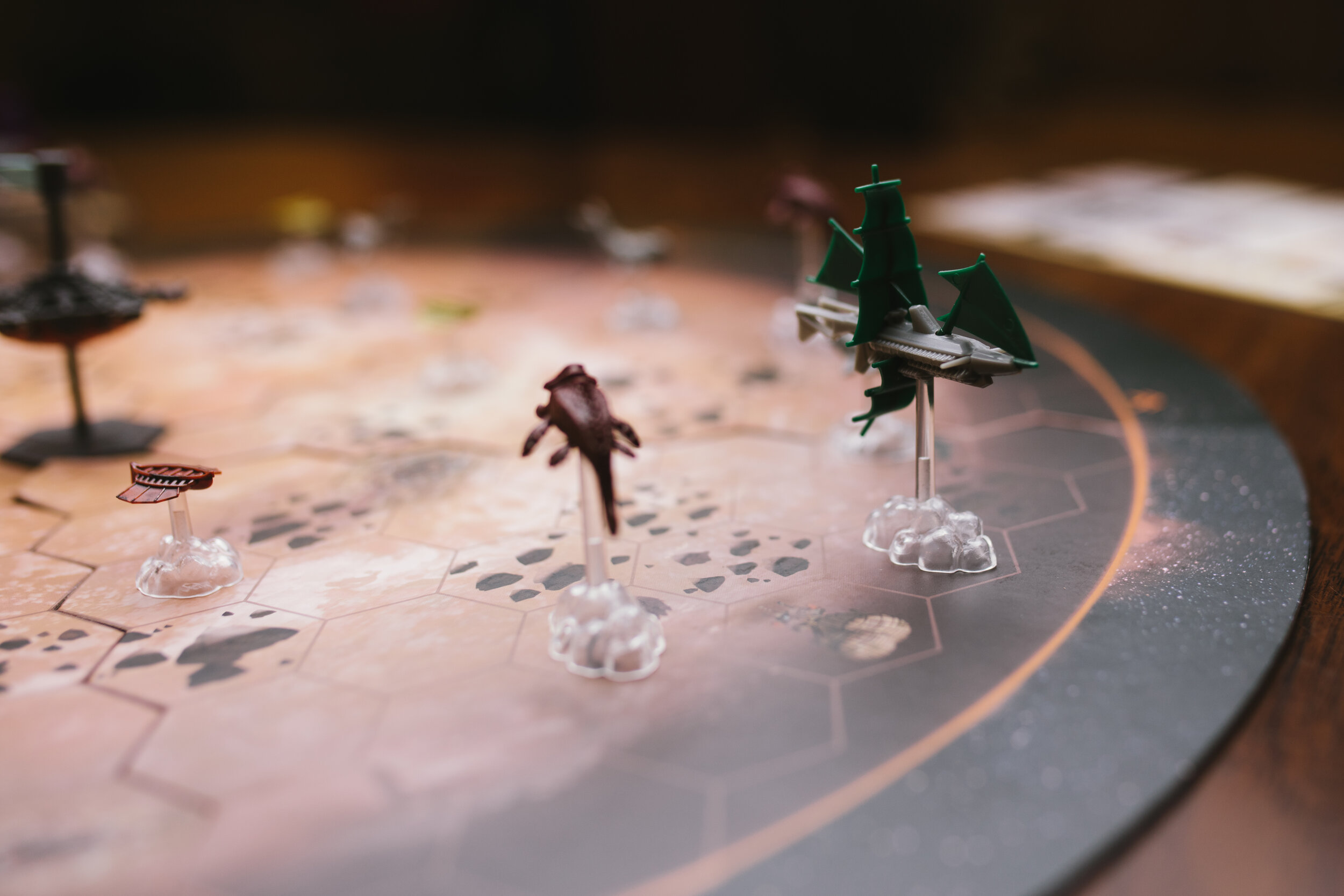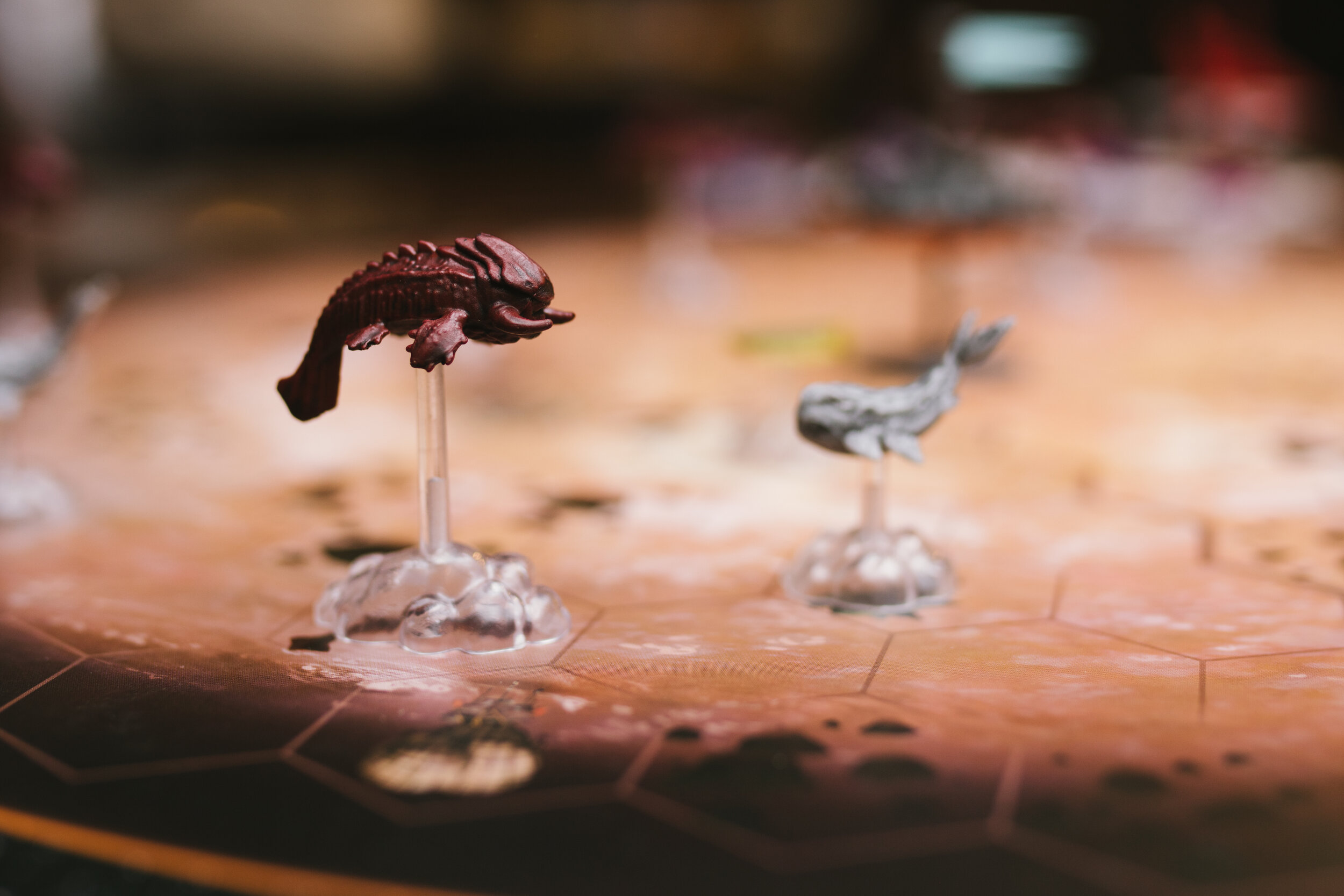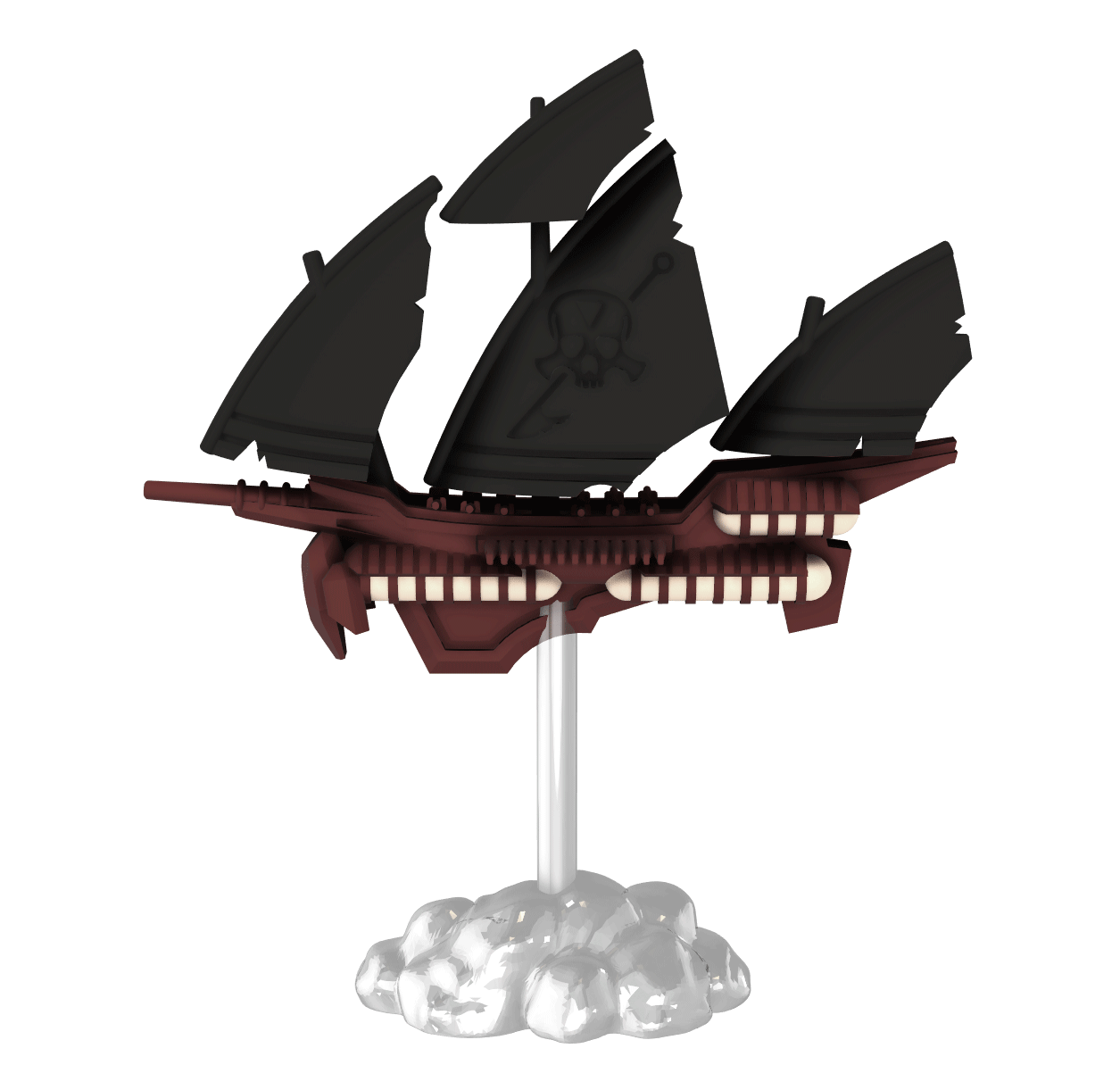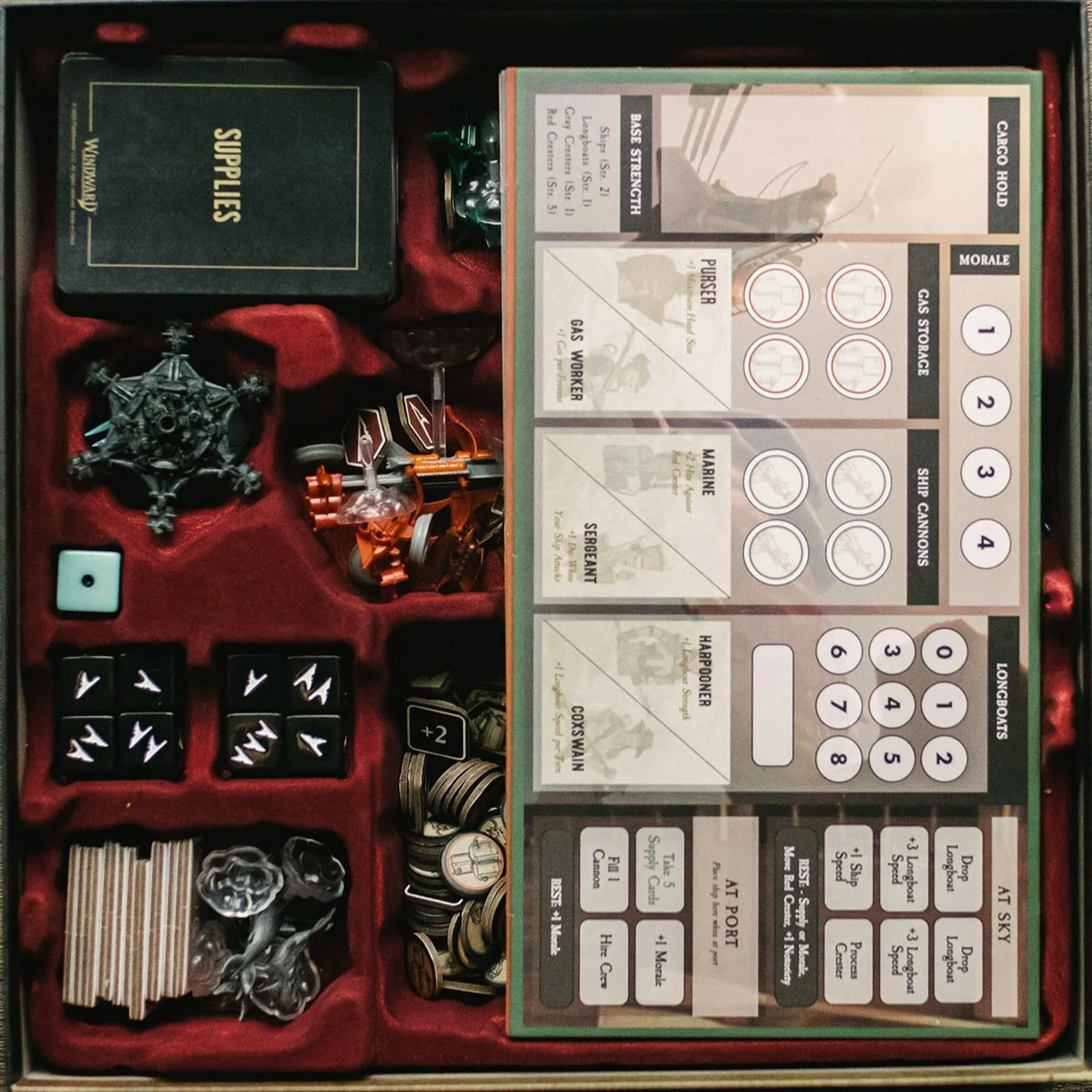design meets worldbuilding
Windward began as a personal thought experiment in 2014 outlining how historical trades would evolve in an anachronistic pseudo-scifi setting. This worldbuilding project then grew, encompassing trade, economics, evolutionary speculation, vehicle/creature/fashion design, and even a bit of chemistry before it became my design thesis project in 2017.
After joining Playmonster in 2017, there was a good amount of interest in bringing the game to shelves, and so it was reborn and remade with the help of El Dorado Games. Windward has seen excellent success initially on kickstarter and now on retailer shelves drawing players into the world of the gas planet Celus, challenging them with movement and economic puzzles, confronting them with sky battles, while staying accessible to anyone interested in playing. This game is truly my baby and I am proud to be able to share my world with so many through this experience.
Interacting with the world
It was extremely important that players could fully immerse themselves in this world through gameplay. There must have been hundreds of iterations from the first playable breadboard game to the final production model, each one narrowing and focusing into the most compelling aspects of this fantasy.
The final game has a little bit for everyone. It incorporates a strategic movement puzzle at its base, layering on top pick up and deliver mechanics, deck building and hand management, combat, engine building, and of course a little bit of luck to see players battling it out in the skies in one way or another to be the most notorious sky captain.








The full rulebook can be found here
designing the world of celus
The advantage of starting a game design project with a world already created is the huge bank of ideas and visuals to draw from. Going into the game I already knew what the fauna looked like, I knew how the craft operated, and I knew what crew they would need. I gradually then began to pick bits out of the world and model or sketch them into the game. The ships, monsters, tokens, stands, dice, trading facilities, and crewmates all needed to be modeled and I accomplished that in a variety of 3D programs including Solidworks, Fusion360, and Zbrush.
Working full time, however, I had neither the bandwidth nor the skill of the incomparable Justin Spice, who with initial direction and compositional sketches, then provided all the incredible keyframe paintings that cover the player boards and can be found all over the game.
The sky beasts
The players need to both hunt and defend themselves from the massive sky beasts known as “cresters”, who take their inspiration from Icelandic folklore. These creatures come in a variety of shapes and sizes and their design needed to reflect the varying ferocity, speed, and toughness of each of them individually.
The mates
The sailors that control the activity and actions on each players ship, called mates, are placed in special locations on the player boards to indicate certain actions are being taken. These tough skymen are represented by another sculpted token that I couldn’t resist making in my own image.
The airships
With the expansion now successfully kickstarted, there are currently 6 playable craft from the Celusian skies now in production. Being a tallship sailor and a keen observer of historical craft under sail, it was extremely important to me that these unique airships be both distinct and attractive, as well as following historical style if not always real functional forms.
The trading posts
The only stable settlements on Celus are huge man made trading posts floating slowly around the planet. These posts are a safe haven from the sky beasts, as well as raiders, but also offer the players a place to rest their crew, hire new specialists, and trade resources for equipment and fame.
The worldbuilding roots of all these designs can be found in my world of windward artbook
Component and packaging experience
There are games that can stand on their own regardless of component or organizational quality, but I was not interested in making one of these games. Windward needed to be a delightful visual and tactile experience from the very start and we worked hard to ensure that was the case. Each player is provided a full suit of minis and tokens as well as a player board to keep track of their journeys through the skies of Celus. Poor components take me, personally, out of board game immersion and I didn’t want that for any Windward player.
Double sided and modular board tiles allow more freedom in re-playability and game customization and double sided player boards plastered with incredible artwork really further the goal of this game being able to treat the player.
unboxing experience
Before the player even gets to the game, we wanted to build interest by simply opening the box. From the full color rule book all the way down to individual component trays, the game unfolds with more and more bits and bobs that spark the imagination.





















